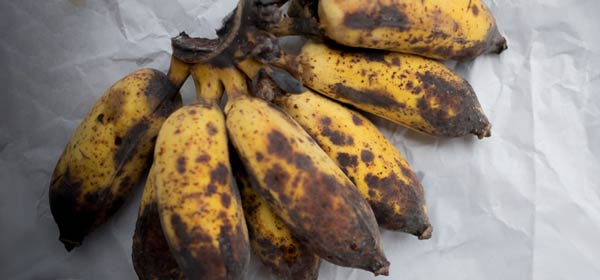I don’t know about you, but I would say my attention to food safety is fairly lax – it would take more than some mould on my bread to bring my iron stomach to its knees. My friend Carina is the exact opposite, however: if the use-by date on a tub of hummus says ‘consume within five days’, she will probably turf it on day four, just to be safe.
Is Carina overly concerned about food or am I just too relaxed? I started thinking: How far can you push it before your food becomes unsafe to eat?
While food safety is important, excessive concern about food ‘going off’ means we’re throwing out perfectly good food. Some nutrition experts suggest food safety is partly about heeding the labels, and partly about using your discretion. What are your senses telling you?
The difference between expiry dates
You probably realise most packaged food products sold in Australian stores will have a use-by or best-before date. And there is a difference.
The use-by date is the last day that product is considered safe to eat, while a best-before date is the date the product will reach its peak freshness.
So, what are the rules?
Food safety starts with proper storage.
Minced meat
Keep in fridge for two days. Store in the freezer for a maximum of three months.
Eggs
Keep at room temperature if consumed within five to seven days. Keep in fridge for up to three weeks. Do not eat eggs that are cracked or broken.
Seafood
Refrigerate immediately. Consume within two days. Otherwise, freeze until needed.
Poultry (uncooked)
Keep in fridge for two or three days or in freezer for up to 12 months.
Red meat (uncooked)
Store in fridge for three or four days or in freezer for 12 months.
Poultry and red meat (cooked)
Keep in fridge for three or four days, or in fridge for two to six months.
Dairy
It’s strongly advised you pay attention to expiry dates regarding dairy products, especially milk and soft cheeses, though you can go two or three days past expiry.
How to tell if your food has gone bad
Bread
If one slice is mouldy, the whole loaf is mouldy. This is because bread is porous so mould spreads very quickly. So, if you’re like me and believe that pinching the mouldy bits off and popping in the toaster gets rid of the bacteria, think again!
Fresh fruit
Fermented smells and flavours as well as changes to texture are the easiest ways to tell if fruit has gone bad. Other signs are discolouration and wrinkling of the skin.
Uncooked meat
Just because uncooked meat has changed colour, that doesn’t mean it’s gone bad. Colour changes can occur from exposure to air. But if your meat smells foul, appears slimy or feels sticky or tacky, it’s best to throw it out.
Milk and yoghurt
Milk will tell you when it’s off by giving off an unclean sour smell or when it gets chunky or lumpy. Yoghurt can last up to three weeks thanks to its inbuilt bacterial cultures, which act as a preservative. Bad yoghurt will have an extra amount of liquid on top and curdling near the bottom.
Cheese
Mould on hard cheese is generally nothing to be concerned about. Unlike bread, hard cheese is not very porous, so you’ll be safe enough to cut the mould off. Mould on soft cheese is a different story, and you should probably throw the whole lot out.
Do you have any food safety tips? Feel free to share them below.
Related articles:
Five nifty ways to reduce food waste
Is it time to clean your fridge?
How to read food labels

